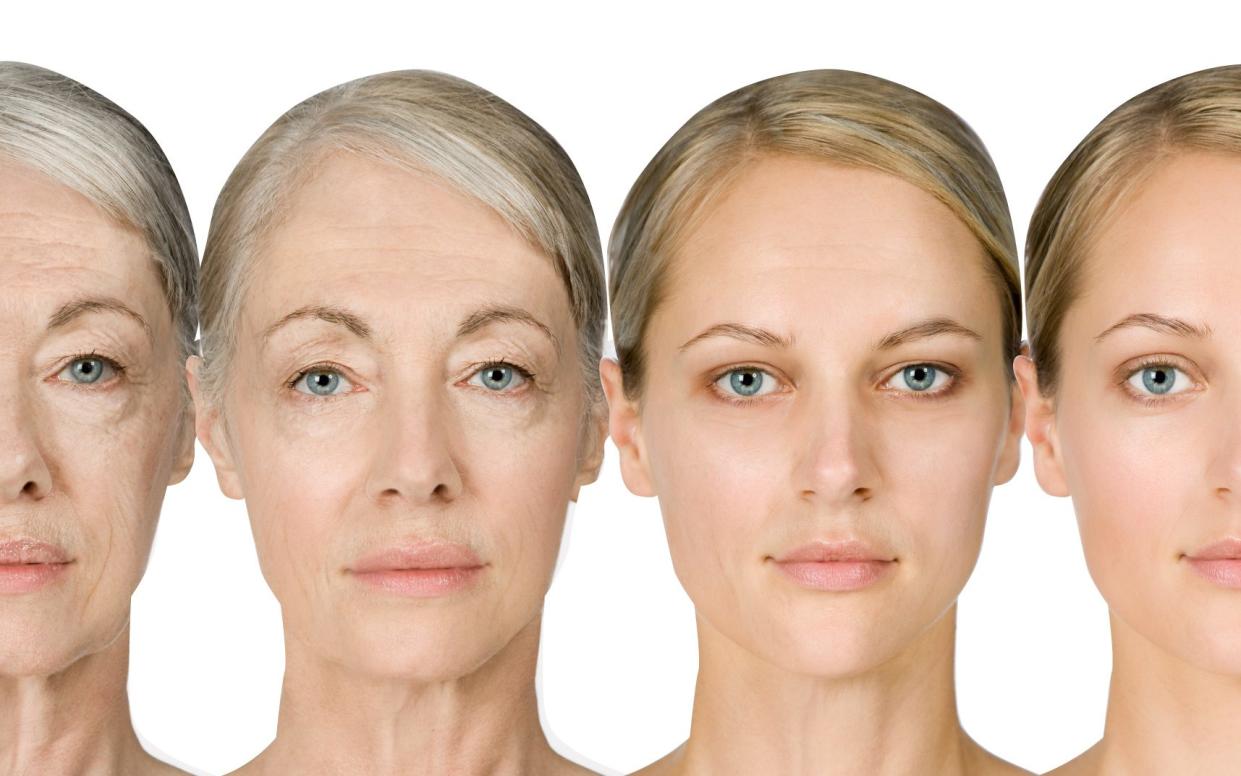‘Youth transplants’ really can slow the ageing process

Harvesting the blood and body parts of the young in the hope of achieving immortality has long been a familiar trope in horror novels and conspiracy theories.
But as macabre as it sounds, science is beginning to discover that “youth transplants” really can slow down the ageing process.
The fountain of youth, it seems, is youth itself.
Although nobody is suggesting we siphon the bodily fluids of youngsters into our elderly, it opens the door to artificially replicating the cocktail of chemicals found in young people.
Young people have more powerful cells which operate more efficiently and could restore vitality to ageing systems.
This week Stanford University showed that infusing cerebrospinal fluid of young mice into old mice improves brain function, a breakthrough which could have enormous implications for dementia and other neurodegenerative conditions.
Cerebrospinal fluid is a clear liquid found within the tissue that surrounds the brain and spinal cord of humans, and is packed full of nutrients, signalling molecules and growth factors which nourish neurons.
The Stanford team infused fluid from 10-week-old mice into the brains of 18-month-old mice over seven days, and found that older mice were better at remembering to associate a small electric shock with a noise and flashing light.
Closer examination showed the fluid had “woken up” processes which regenerate neurons and myelin – the fatty material that protects nerve cells within the hippocampus, the memory centre of the brain.
Crucially, scientists think they know which part of the fluid is primarily driving the effect: a protein called serum response factor (SRF) which decreases in older mice.
When they used a growth factor called Fgf17 to boost levels of SRF, the older mice showed the same improvements seen with the youthful infusions, suggesting that Fgf17 could be used as a treatment to rejuvenate ageing brains.
Ageing process is ‘malleable’
Dr Tony Wyss-Coray, of Stanford’s School of Medicine in California, said the research showed that the ageing process is “malleable” and that improving the environment in which neurons live may be a better approach than targeting the cells themselves.
And it’s not just in the brain where the regenerating properties of youth are showing promise. The effect appears to work from head to tail.
Earlier this month, The Quadram Institute in Norwich showed that transplanting faecal microbes from young mice into old mice reversed hallmarks of ageing in the gut, eyes and brain.
In contrast, when microbes from aged mice were transplanted into young mice, it induced inflammation in the brain, depleting a key protein required for normal eyesight.
The team is now working to understand how long these positive effects last and how they are able to impact organs far away from the gut.
Dr Aimee Parker, The Quadram Institute’s lead author of the study, said: “We were excited to find that by changing the gut microbiota of elderly individuals, we could rescue indicators of age-associated decline commonly seen in degenerative conditions of the eye and brain.”
Although the latest studies have been done on mice, the breakthroughs signal an important shift in the field of ageing, which could soon revolutionise therapies.
Experiments are even showing that young blood itself can reverse the ageing process, perhaps even curing Alzheimer’s disease.
Historically, cultures have revered the blood of the young. It was even rumoured that Kim Jong-il, the former North Korean dictator, injected himself with blood from healthy young virgins to slow the ageing process.
The first hint that young blood may be rejuvenating came in 2005 when Stanford carried out a grisly experiment stitching old and young mice together so that they shared a circulatory system.
After a month, the scientists discovered that the liver and muscles of the older mouse had begun to regenerate.
In 2014, Harvard University discovered that young blood also “recharges” the brain, triggering the formation of new blood vessels and improving memory and learning in mice.
The team even identified a “youth protein” which is responsible for keeping the brain and muscles young and strong.
The protein, known as GDF11, is present in the bloodstream in large quantities when we are young but peters out as we age.
Raising levels of the GDF11 protein in mice has been shown to improve the function of every organ in the body, including the heart.
$8,000 for teenage blood plasma
However, the field is not without controversy. In 2019, a US start-up called Ambrosia that was offering teenage blood plasma to Silicon Valley billionaires for $8,000 a litre was forced to shut down after the FDA warned against the procedure.
In 2017, Ambrosia began a clinical trial designed to find out what happens when the veins of adults are filled with blood from younger people, but never published the results.
There are still hopes that one day such procedures will be used in humans.
In 2019, Wyss-Coray’s biotech company Alkahest reported the results from a small six-month trial that saw 40 patients with Alzheimer’s disease infused with a special human plasma blend, containing more of the proteins which vanish with age.
It appeared to halt their expected mental decline. The company also has similar trials under way for Parkinson’s disease, age-related macular degeneration, inflammatory disease and end-stage renal disease.
The Harvard spin-off company Elevian is also working on producing enough GDF11 to begin human trials that explore whether it can help people recover after strokes.
“Our research suggests that by targeting fundamental and common underlying mechanisms of ageing as opposed to a specific disease, it may be possible to treat and prevent multiple age-related diseases,” said Dr Mark Allen, Elevian CEO and co-founder.
It may only be a few years before “youth transplants” finally move from the pages of gothic horror novels into the clinic. Whether patients will feel squeamish about such vampire procedures remains to be seen.

 Yahoo News
Yahoo News 
